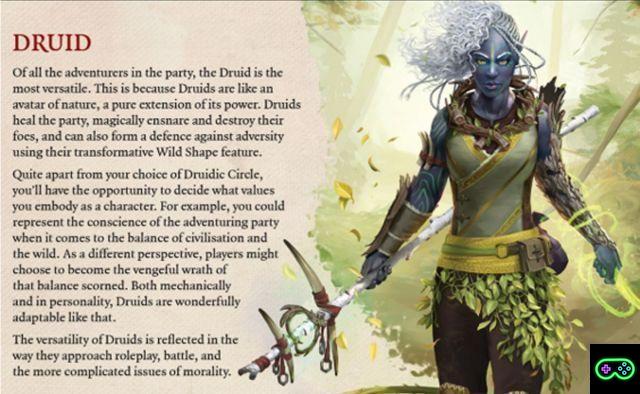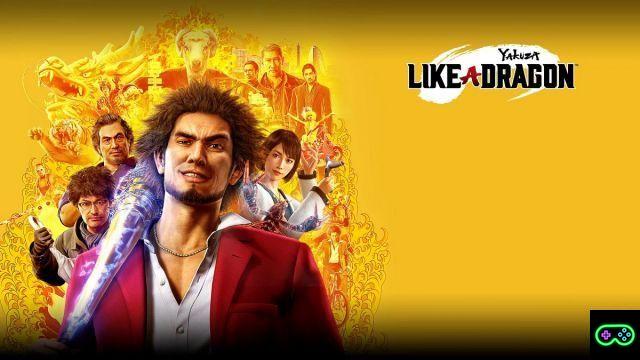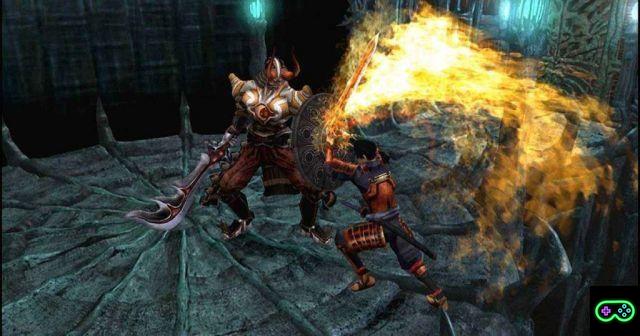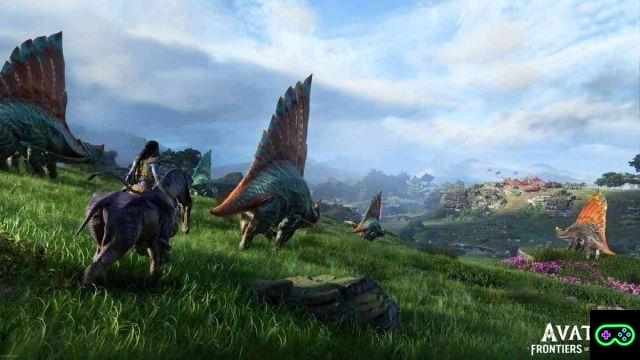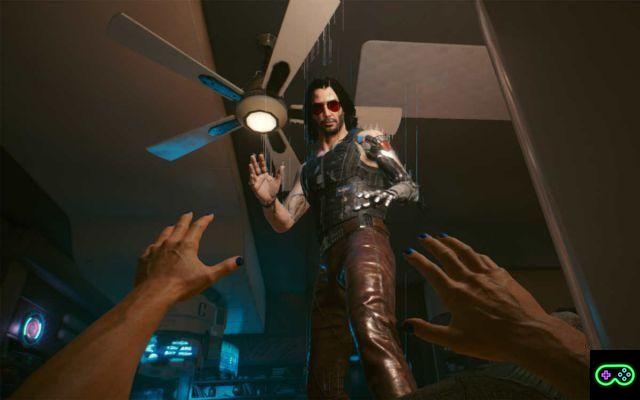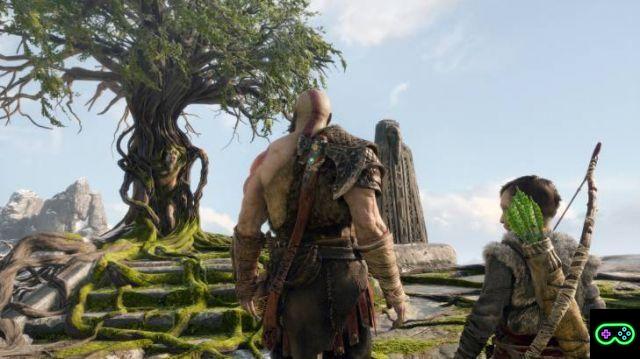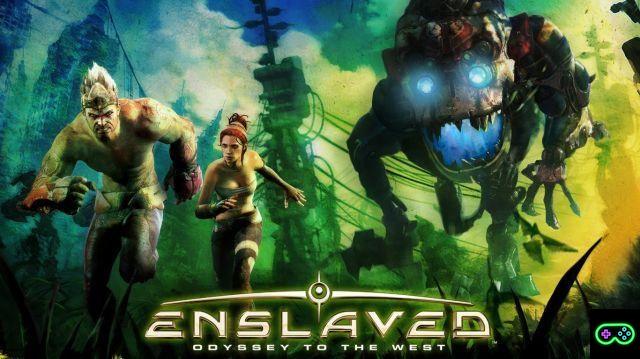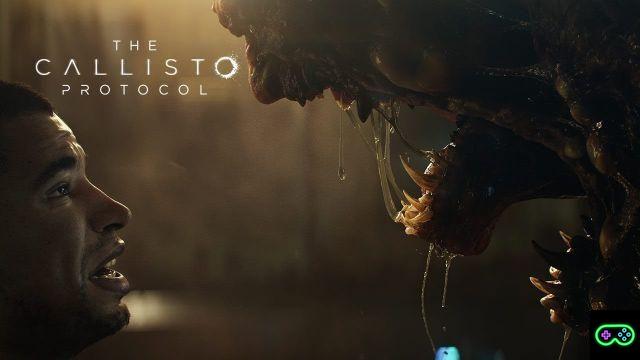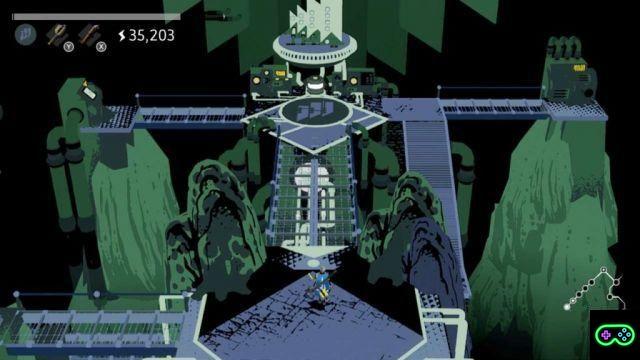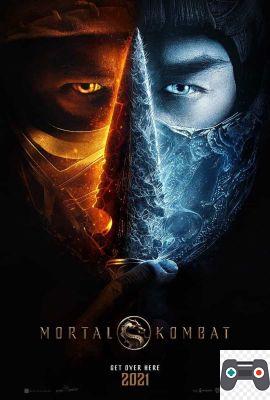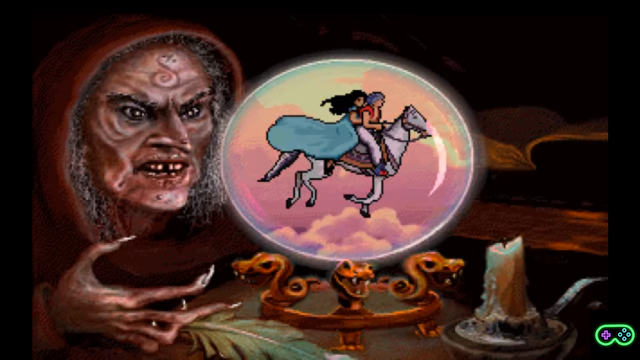osamu sato is a Japanese musician, designer and programmer who became famous (for wanting to use a hyperbole) due to the paternity of LSD: Dream Emulator, one of the most hallucinating and niche titles of the entire toy library Playstation 1. His dreamlike and psychedelic style is one of the most characteristic within the small circle of characters in the industry who have got involved in our world, that of video games.
During this episode of Golden Section we will look from above at some moments of the artistic production of osamu sato within the world of video games by observing what his artistic inspirations have been and going to take an in-depth look at what it meant Sato for the video game industry.
Enjoy the reading!
Who is Osamu Sato?
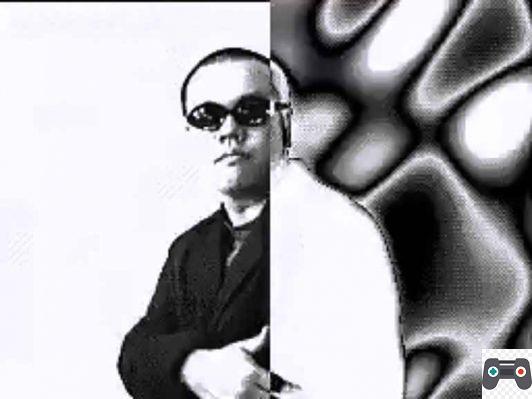
osamu sato is a Japanese artist born on April 14, 1960 in Kyotor who also dealt with the visual aspect of a series of video games between Macintosh e Playstation 1. During 1989 she founded a creative studio called Out Side Directors Company where, in the position of director, he would be responsible for the supervision and implementation of projects concerning graphics, animation and music.
These creative tensions of Sato during the nineties they blossomed into a series of videogame projects that cross the world of videogames to mix psychedelic music, graphic design and dream culture. The first product related to the world of information technology that was created by Sato is a manual called "the Art of Computer Design: A Black and White Approach" published in 1992. Subsequently, the Japanese author gave the world seven different video games between Playstation 1 e Personal Computer.
During the course of the XNUMXs osamu sato he slowly leaves the world of video games to concentrate on music production, another great passion of his and in parallel slowly releases his clutches from the world of graphic design to reach the world of photography, giving himself over to the more artistic side of modern creative productions.
THEosamu sato that we are going to observe is the one that in the course of his career has given us a series of dreamlike and psychedelic titles completely out of the normal schemes linked to the world of video games; all titles made by Sato in one way or another they are enormously imbued with the artist's artistic trait, a stylistic sign that can be found in a thousand different parameters including the setting of (crazy) graphic identities.
The author's works live in the balance between some hints of futurism, the geometric rigor and the typical formalisms of Bauhaus German and the colors ofRussian avant-garde.
Osamu Sato e Eastern Mind: The Lost Souls Of Tong Nou
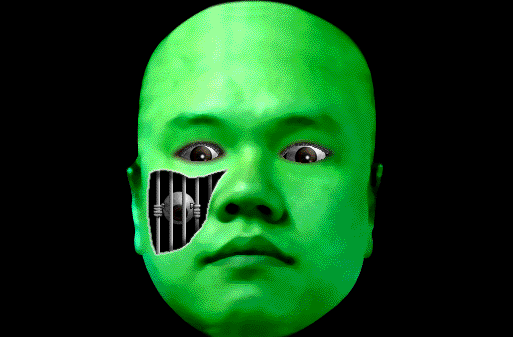
The first title with which osamu sato introduces you to the world of video games is Easter Mind: The Lost Souls Of Tong Nou, a kind of graphic adventure myst-like whereby the author immediately makes clear his poetics and his vision of the world.
The title immediately presents itself as a tangle of different styles and materials: two-dimensional sprites, photographs, three-dimensional models, animated objects in claymotion and whoever has the most.
The plot of the title is already quite curious in itself: in the role of Rin, the player will find himself having to recompose his soul by traveling in the various sectors in which the island of is divided Tong Nou.
This islet, geographically located in the far east, is literally a retouched photograph turned on an acid green of the head of the same. osamu sato.
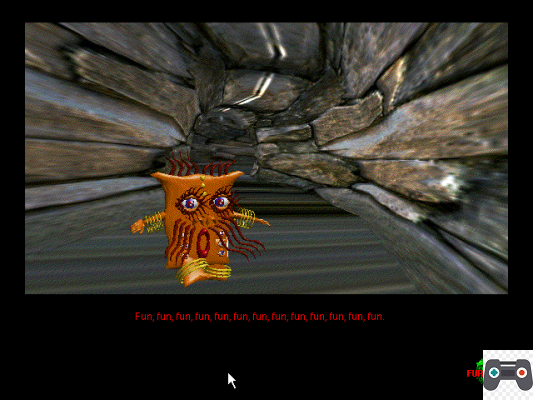
The island of Tong Nou, although it is essentially composed of a human skull and what composes it, it is perhaps one of the most artificial and dreamlike things that man has ever given birth.
As stated by the same Sato within his only interview made in recent times, the title is admittedly influenced by the artist's daily life and by the environment in which he lived. Here we find Buddhism, the concept of reincarnation, a completely alien world that recalls some of the artistic products that came out with the proliferation of psychedelia during the sixties.
On an in-depth analysis, the alienating environments of the island / head can turn out to be the materialization (almost according to the dictates ofexpressionism) of the processes that regulate the birth and death of man's thoughts. The most surprising thing about these creations is that, in the end, they are simply backgrounds that serve to highlight even more hallucinatory and absurd creations.
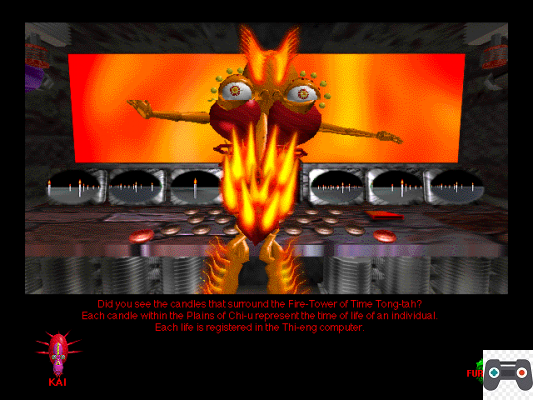
In Eastern Mind what really leaves its mark is the character design, absolutely over the top and completely disconnected from any notion of anatomy or any representation of reality. The creatures in the game are extremely rough three-dimensional models where Sato it enjoys attacking noses, mouths, orifices, eyes and hair in bulk. The final result of this operation makes the characters of the Japanese designer resemble a cross between the product of a malfunctioning neural network and a collection of masks belonging to the artistic current. naive.
This title, in all its chromatic dissonance and in its extreme hostility (not only limited to the player's field of vision), is the starting point for Sato which will increase with its next title, a title with a complicated gestation. The artistic importance of Eastern Mind: The Lost Souls Of Tong Nou ended the title in the collection of the The Strong National Museum of Play, one of the most important world museums concerning the play medium as a whole.
Chu Teng
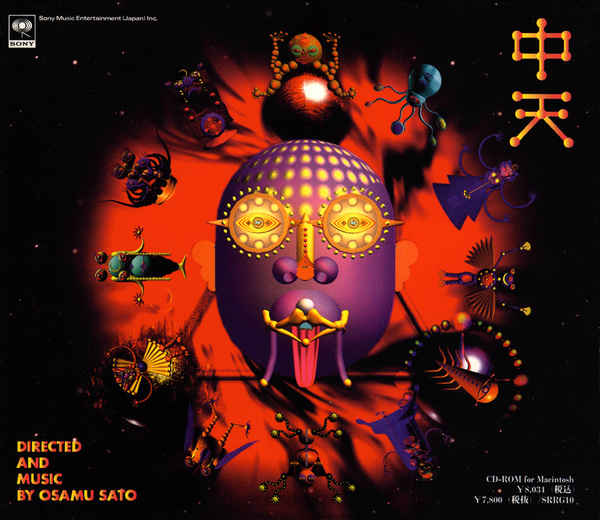
Despite the precedent Eastern Mind had not become a commercial success, the creative impetus of osamu sato he was satisfied and the Japanese artist undertook to create his own spiritual following called Chu Teng, only released for Macintosh and sadly disappeared from any type of shelf. If nowadays we can talk and analyze Chu-Teng somehow it is solely thanks to a handful of anonymous board users /vr/ di 4Chan, capable of great things when there are no insults involved.
The story of how the internet got a physical copy of Chu Teng is wonderful but particularly out of place, which is why we recommend reading this article by Killscreen.
Osamu Sato, also in this game, he takes, swallows up and remastes all the Buddhism that he was able to experience in the course of his previous years to bring out again an out-of-the-canon setting: ours Rin, fresh from the recovery of his soul within the previous title, this time he will have to embark on an even crazier mission. Saving heaven by coming to its center, called Chu Teng, to find the face of Nanshu, servant of the noble Suinshin. Nanshu's most prominent feature is its ability to immerse itself in the dark clouds that threaten the eternal tranquility of the Chu Teng. The setting of the title seems to be particularly inspired by the concept of the Devaloka, that is a common plan of existence in religions of Hindu matrix where divinities and devas coexist in an eternal peace.
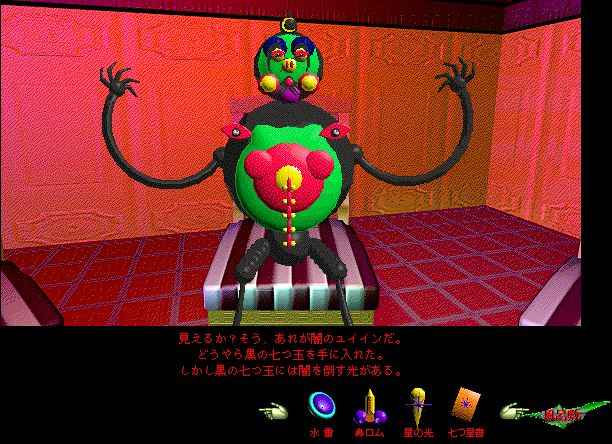
This time the setting moves into the celestial ether and with it the tones with which the title is graphically and artistically constructed change slightly. The graphic impact becomes more homogeneous because Sato chooses to use almost entirely three-dimensional graphics with its polygonal models; the pre-rendered backdrops that make up the backgrounds acquire a plasticky consistency, with colors poised between the gray of the fog and the shocking purple of some interiors; the palette may have been easily stolen from a Wassily Kandinsky.
Even here, where madness becomes a fundamental part of the experience is in the character design, even more bewildered, geometric and impossible than the one presented by Sato in Eastern Mind. The characters of Chu Teng they are semi-divine, they are beings capable of dividing their essences and possess the typical characteristics of a cubist painting with different perspectives merged into a single form. Just mention, for example, the aforementioned Nanshuu: a small body consisting of a torso and a head, both purple and yellow; the head of such a creature possesses nine eyes arranged in a radial pattern along the edge of his "face" while the body is composed of a hollow circle inside which there is a strange symbol, with a metallic color.
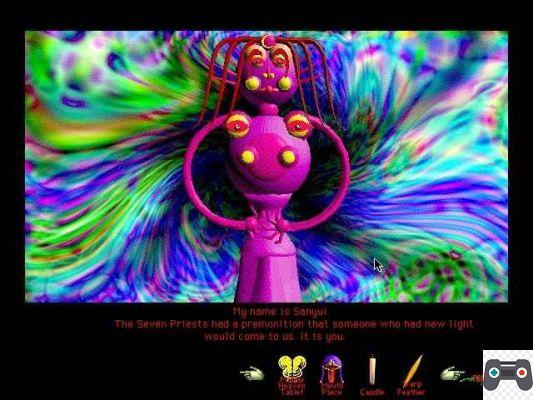
Compared to the previous title, the visual identity is lowered more on the sacred creatures they inhabit Chu Teng; the settings, also thanks to the homogenization of the graphic styles used. The inhabitants of paradise, at least in the head of Sato, are incredibly grotesque and exaggerated, have on their side of the vices and movements that clearly raise them to a higher level of existence and create only confusion in the miserable minds of humans.
Chu Teng is the second title of osamu sato and it turns out to be, artistically and visually speaking, the weakest; there are not a thousand crazy styles of Eastern Mind nor will there be the completely artistic ambition that will animate Sato's next game. An imperfect son who was in danger of being lost forever in the flow of the Japanese videogame industry of the mid-nineties.
During the next episode of Golden Section we are going to analyze LSD: Dream Emulator and the final chapters of osamu sato.




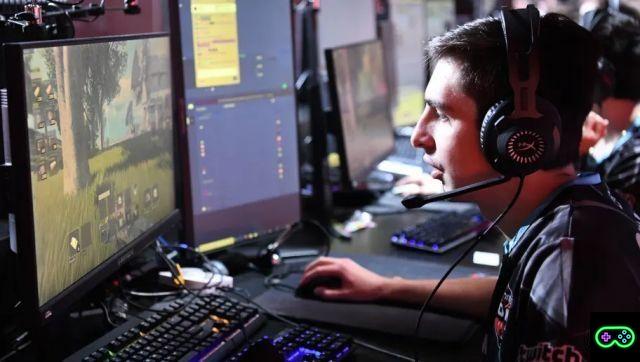
![[The Bear's Lair] God of War: Betrayal and Greek mythology](/images/posts/17432d3b12ecfec44b0b855d20c7520f-0.jpg)



